
a super super rare Superb Halictine Sweat Bee probably Oligochlora
in a beautiful Authentic Dominican Amber Gemstone
excavated in the La Bucara or El Valle amber mines in the spring of 2015
this specimen has been examined by paleoentomologists at the American Museum of Natural History in New York City
$4,500.00 No Reserve
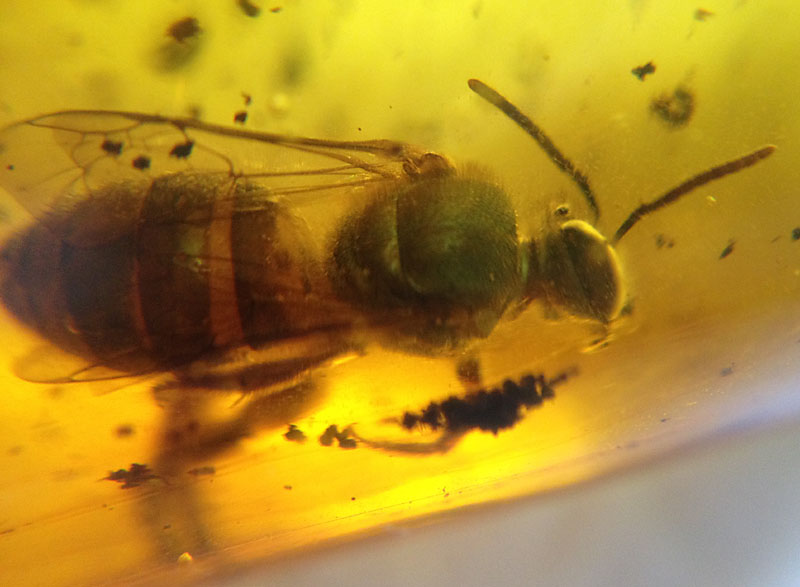
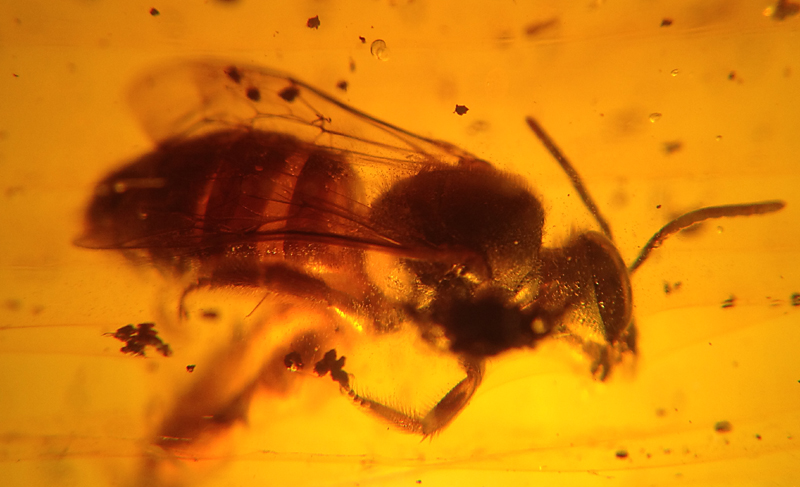
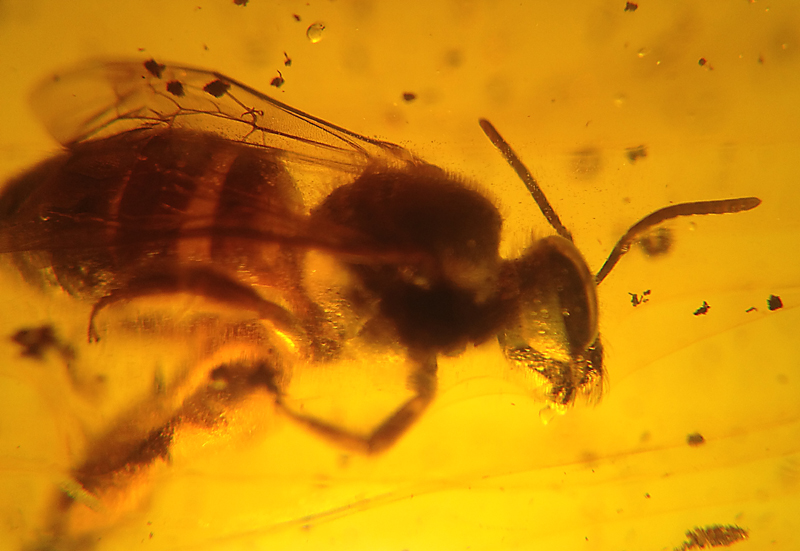
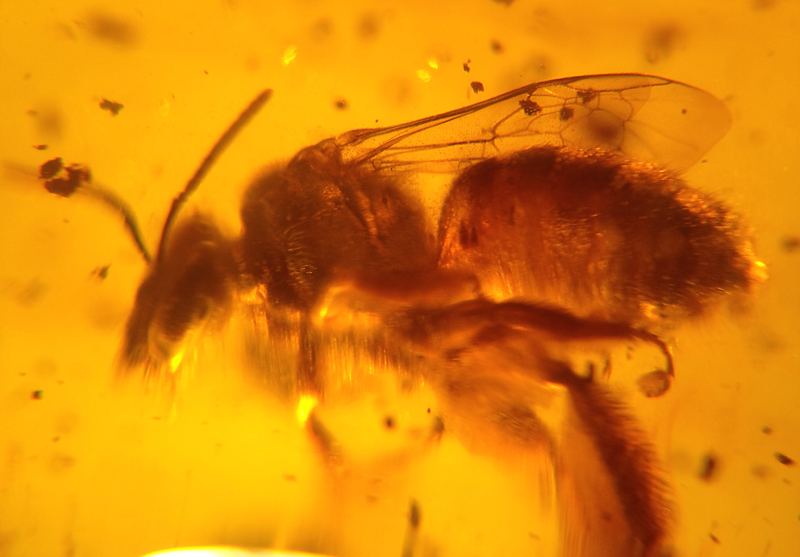
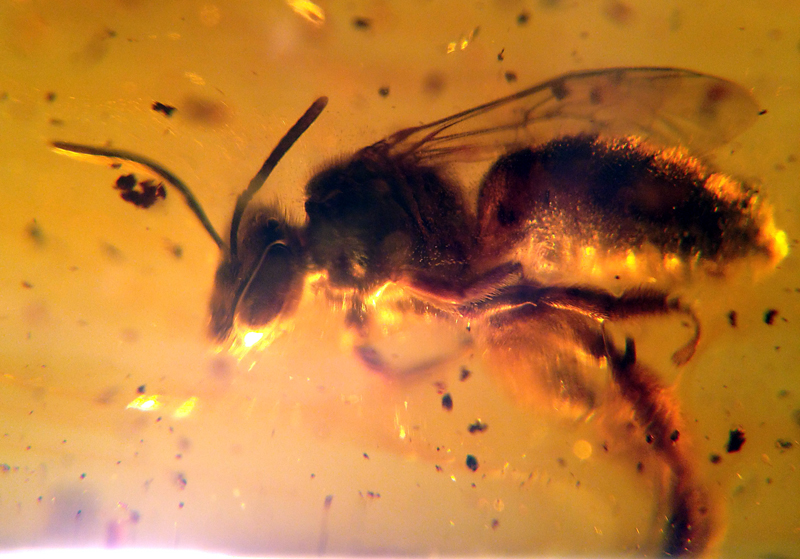
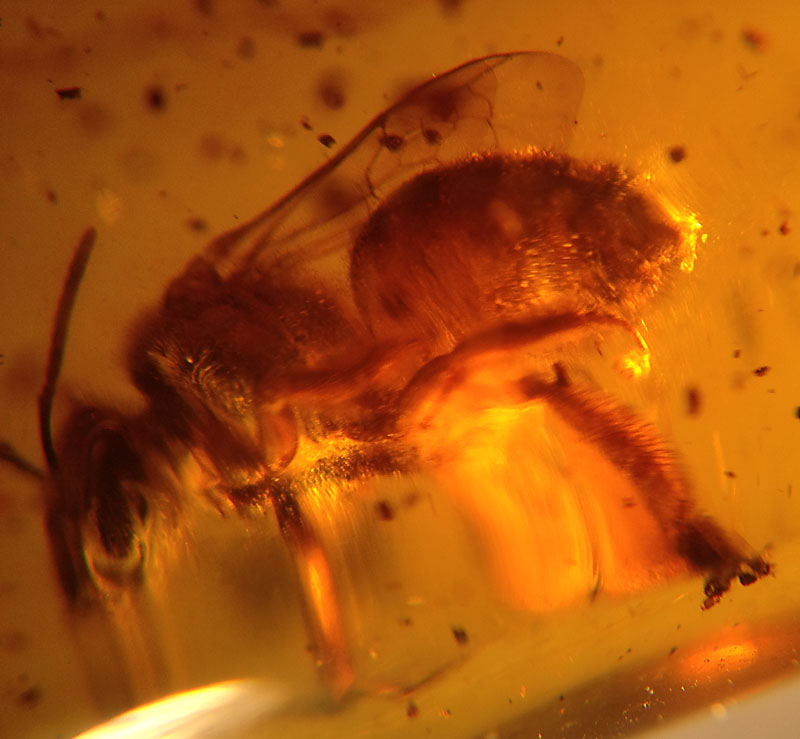
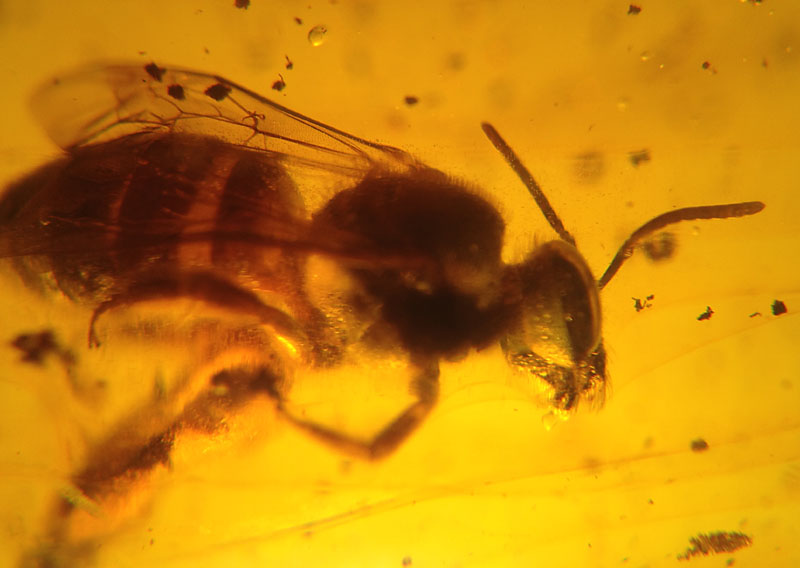
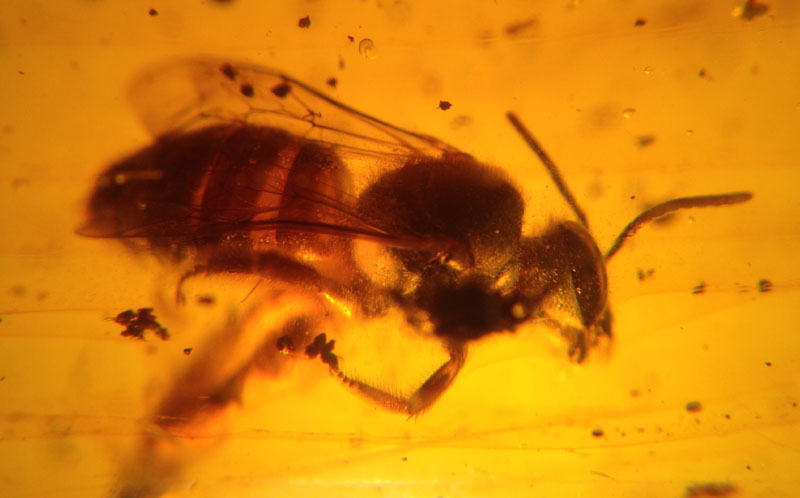
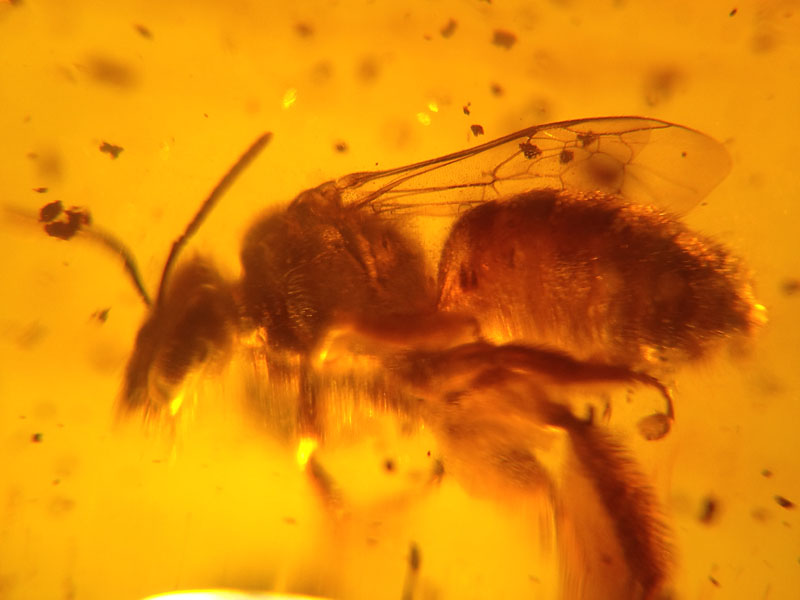
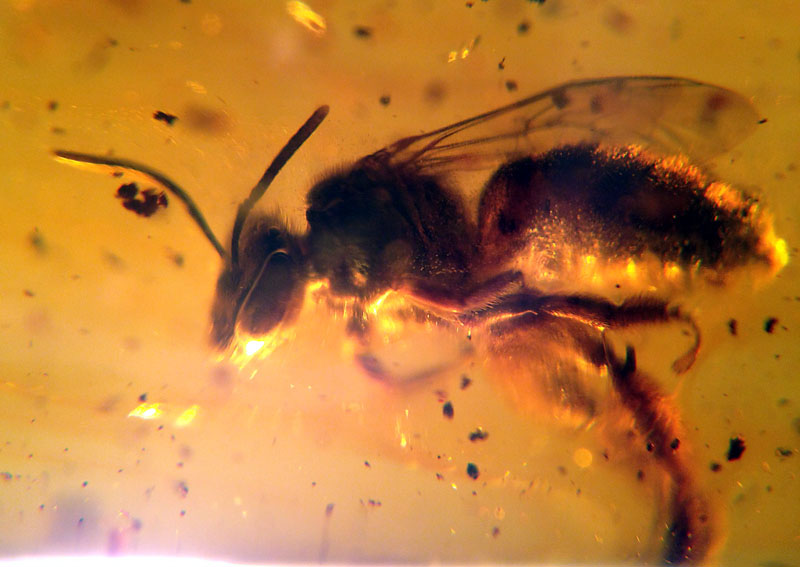
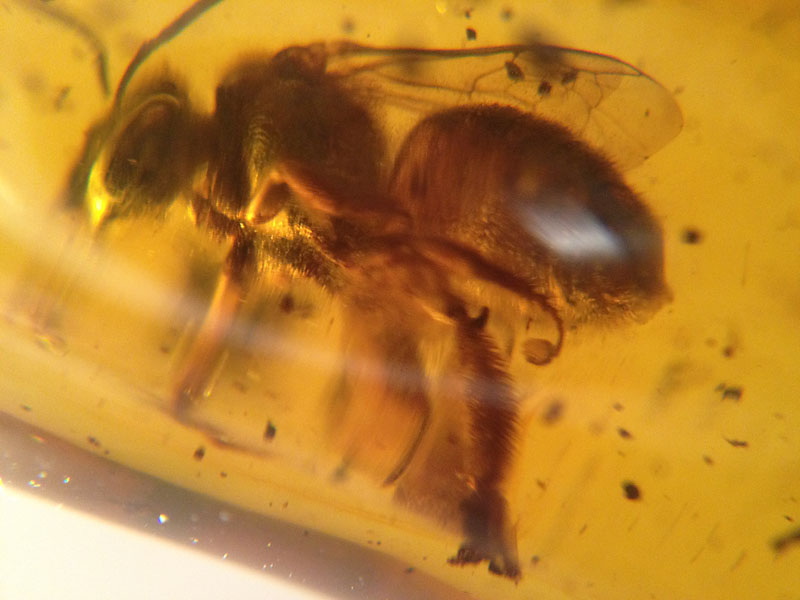
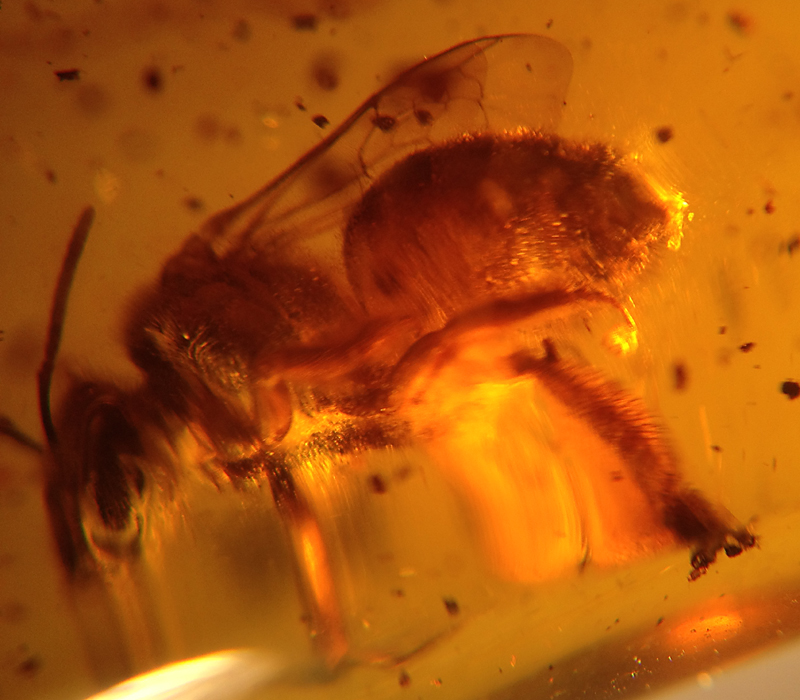
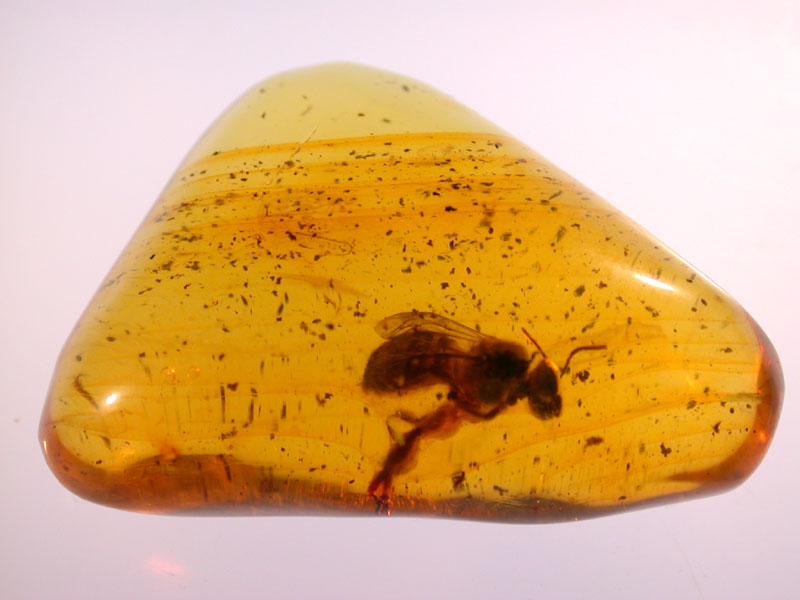
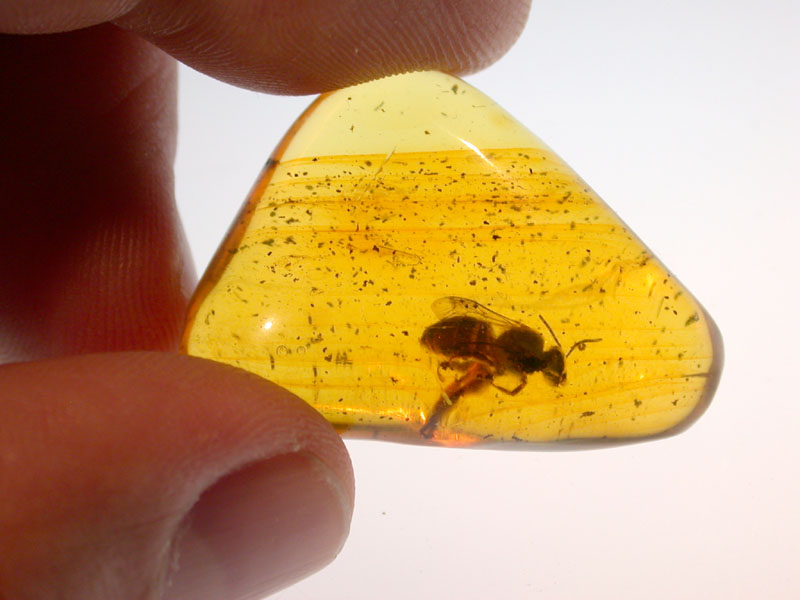
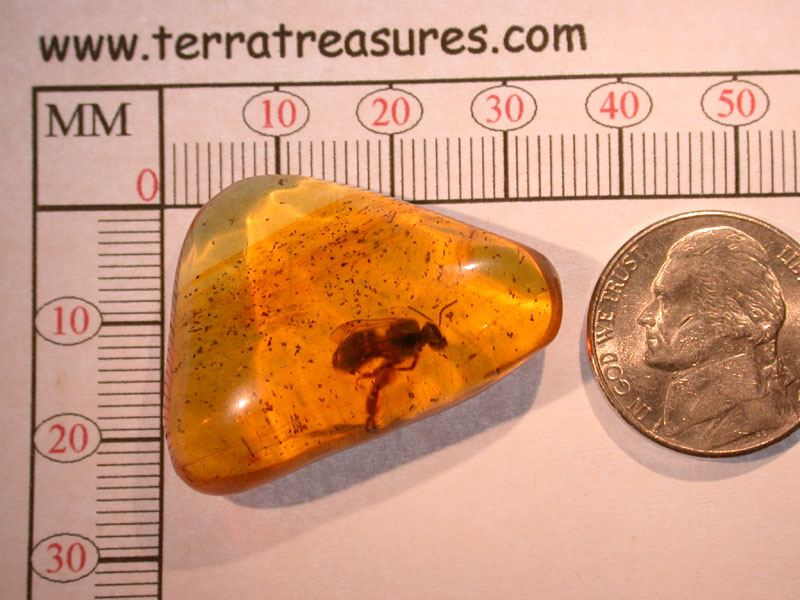
from wikipedia... The genus was first described by Dr. Michael Engel in a 1996 paper published in the Journal of the Kansas Entomological Society. The genus name is a combination of "Oligo", from Oligocene a possible age of the amber and "chlora" from the genus Augochlora, the type genus of the tribe Augochlorini where Oligochlora is placed. Along with the genus description, the paper contained the description of the type species O. eickworti and the second species O. micheneri. Dr Engel described a third species, O. grimaldii in 1997. A fourth species, O. rozeni was published in 2000 and the genus was split into two subgenera, Oligochlora (Oligochlora) and Oligochlora (Soliapis).[5] The subgenus Soliapis is named from the Latin words sola, meaning "alone", and apis, meaning "bee" in reference the lack of an acarinarium on O. rozeni. A fifth species, O. marquettorum was also published in 2000, jointly described by Dr. Engel and Molly G. Rightmyer and placed into O. (Soliapis). In 2009, with the publication of O. semirugosa by Dr. Engel, the total number of species was raised to six. from Michael S. Engel / ZooKeys 29: 1–12 (2009) "Our knowledge of the Dominican amber bee fauna has expanded signifi cantly in the last "To date 14 specimens of Halictinae have |
Some photos of our amber excavations in the Dominican Republic June 2014

Some photos of our amber excavations in the
Dominican Republic March 2014











































Some photos of our last amber excavations in the Dominican Republic September 2012















































Some photos of our last amber excavations in Asia January 2010 (new top secret location for now)



Some photos of our amber excavations in August 2007 at La Toca and La Bucara amber mines




Description
This is an authentic Dominican Amber Gemstone excavated in either the La Bucara, Los CaCoas, Peekado Boo Boo or the La Toca Amber Mine in the Spring/Summer of 2014.
Dominican Amber
In the Dominican Republic, Hymenaea trees are called Algorrobo. The Hymenaea tree exudes vast amounts of resin which over millions of years of pressure hardens into amber. Generally amber is found because a landslide along a steep slope in the mountains exposes veins of black lignite. If the lignite contains amber it is gradually extracted by digging along the vein with picks and shovels. After the amber is found it is chiseled by hand out of the shaft walls, put into burlap sacks and passed out of the mine where it is separated from the rock by machete. Larger chunks of amber make it possible to view inclusions almost immediately by holding the amber up to sunlight to determine if a large inclusion has been discovered. Fossil bearing amber is polished locally.
Shipping and Insurance
Within the USA - shipping and insurance is $7.00 - we ship all specimens US Postal Service Priority Mail. Outside of the USA - shipping and insurance to any country outside of the USA including Canada is $40.00 - we ship US Postal Service Global Express Mail. If you require any other method of shipping please contact us.
About Us
We have been collecting amber in the field and prepping rough fossil amber specimens since 1993. Photographs of our specimens have appeared in National Geographic, Nature, Science, Scientific American, Discover, Time, Newsweek, The New York Times and others. We have been featured in PaleoWorld's The Amber Hunters. We offer authentic museum quality Dominican Amber display specimens of rare insects in amber and also authentic rare Dominican rough unprepared amber for sale. Our collections include museum quality rare insects in amber, unusual botanicals and flowers in amber and also rough unprepared Dominican Amber gemstones. We have traveled many times to the Dominican Republic where we have chiseled beautiful amber gemstones out of the lignite layers deep in the amber mines north of Santiago. We have excavated in the Palo Quemado and Los CaCaos blue amber mines and also in La Nueva Toca and the world famous La Toca amber mines way up in the mountains north of Santiago. For many years we have extensively collected mid Cretaceous New Jersey amber in the Raritan formation of central New Jersey and have traveled many times to collect late Cretaceous and early Paleocene amber in the Hanna formation of eastern Wyoming. We have collected mid Cretaceous amber in the Black Creek formation of eastern North Carolina and we have spent weeks collecting mid Cretaceous amber in the northern most Tundra of Alaska. Some of our most recent collecting trips have been in October of 2003 to the western Aleutian Islands some 1000 miles west of Anchorage to explore and collect Miocene amber, August of 2004 and April of 2006 we were back in the Dominican Republic to collect Miocene amber from the Palo Quemado amber mines which have recently closed due to the miners finding little amber, we were back to the Dominican Republic in April of 2006 to video in the La Toca amber mines, and most recently in August of 2007 we excavated in La Toca and La Bucara. The La Toca amber mines had much water whereas on the other ridgeline the La Bucara amber mines were nearly dry! We collected much amber from both La Toca and La Bucara. January 2010 we have collected at a new site of early Eocene amber in Asia. As these specimens are examined and prepared we will post some additional photos of this new locality. Recently we have just returned from excavating amber in the Dominican Republic in March 2014 and June of 2014.
We have donated many hundreds of amber specimens to museums in the United States and have several dozen new species of insects in amber named after us. We have examined several thousand specimens of rough Burmese amber and have prepped many new Burmese fossil amber specimens. We have traveled to Europe with colleagues to examine unusual spectacular Dominican Amber specimens in private collections and we consider the amber curators of the museums in Santo Domingo, Puerto Plata and New York City our friends. Exploring for and collecting amber along with the examination and research of amber is our passion.
Our amber comes direct from the Dominican Republic amber mines east of the world famous La Toca amber mine. These specimens do not go through any middle men, we acquire these specimens from the miners and mine owners directly at the amber mines.
top














































